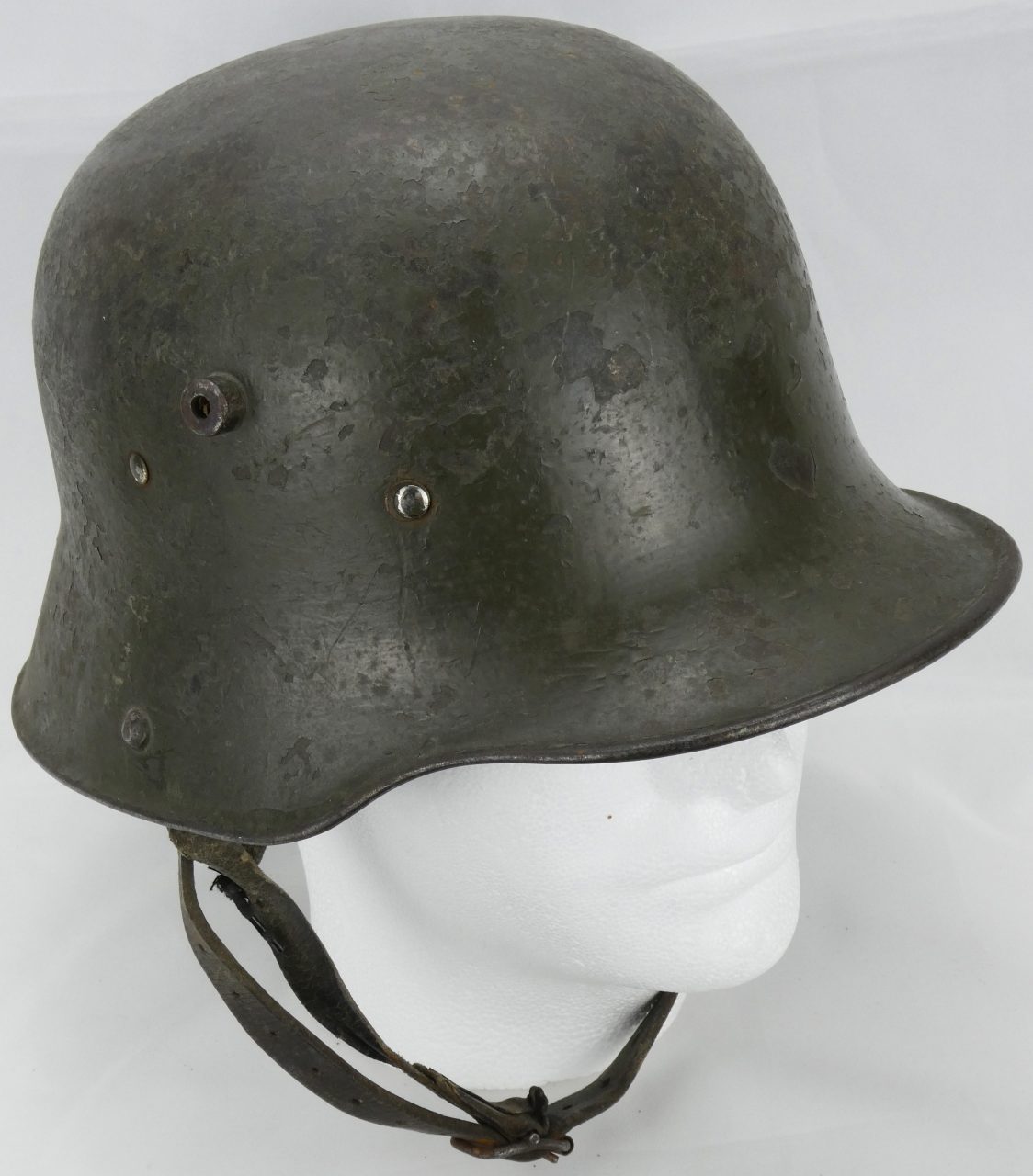Finland received German Stalhelms during the Winter War (1939), WW2, and into the 1950’s. The Finnish military used Stalhelms through the 1970’s [1] and were kept in inventory as late as 2006 [2][3].
M1916:
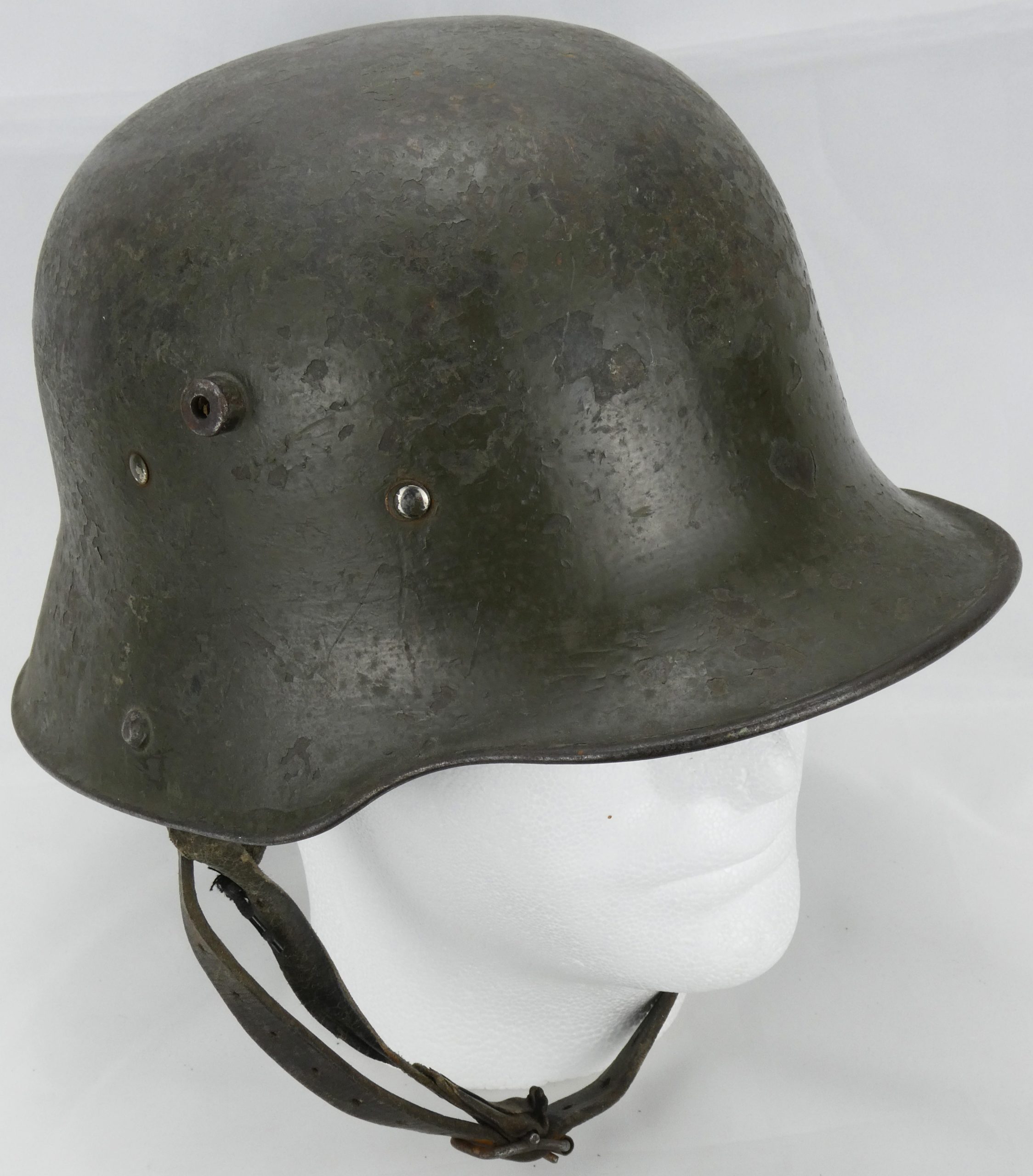
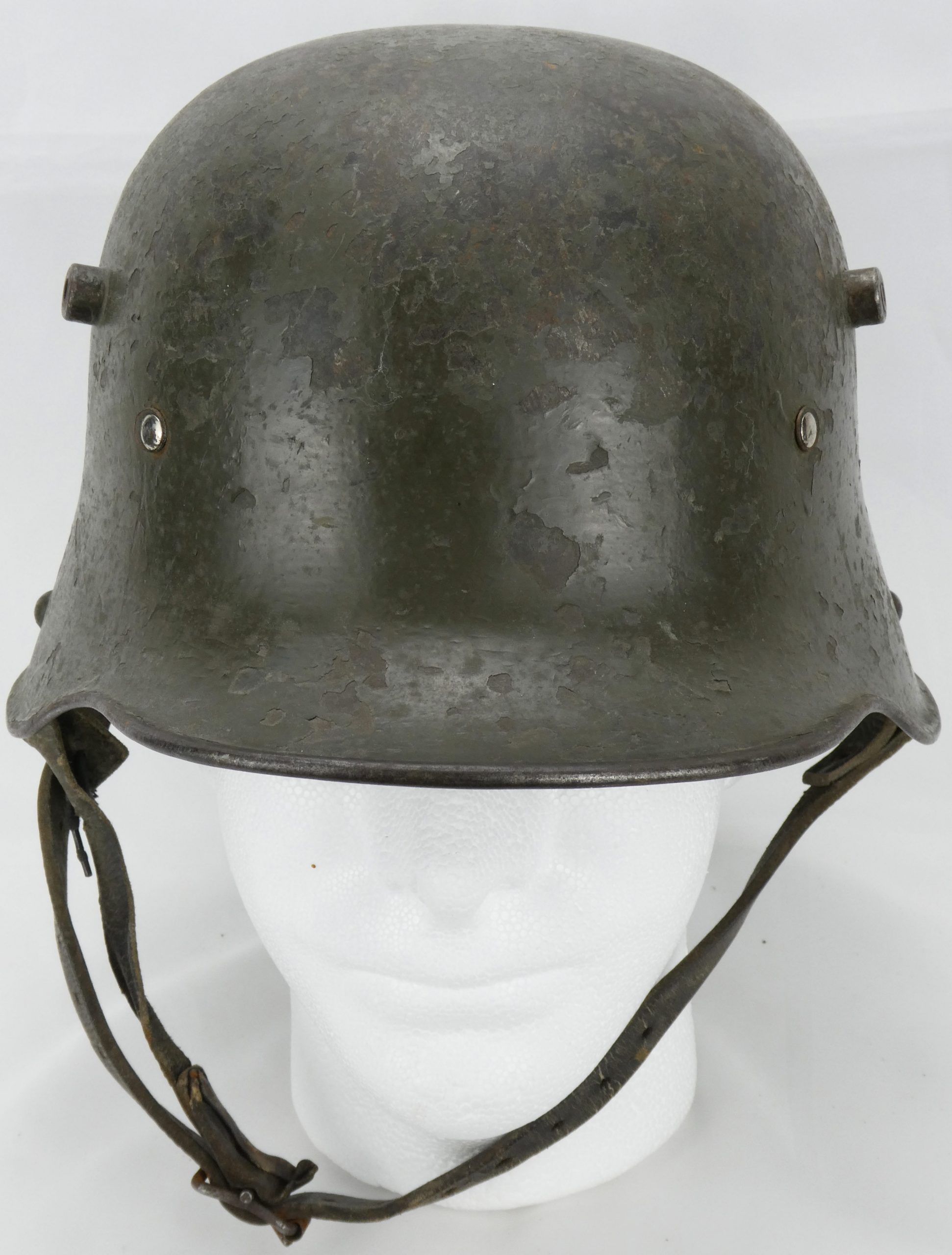
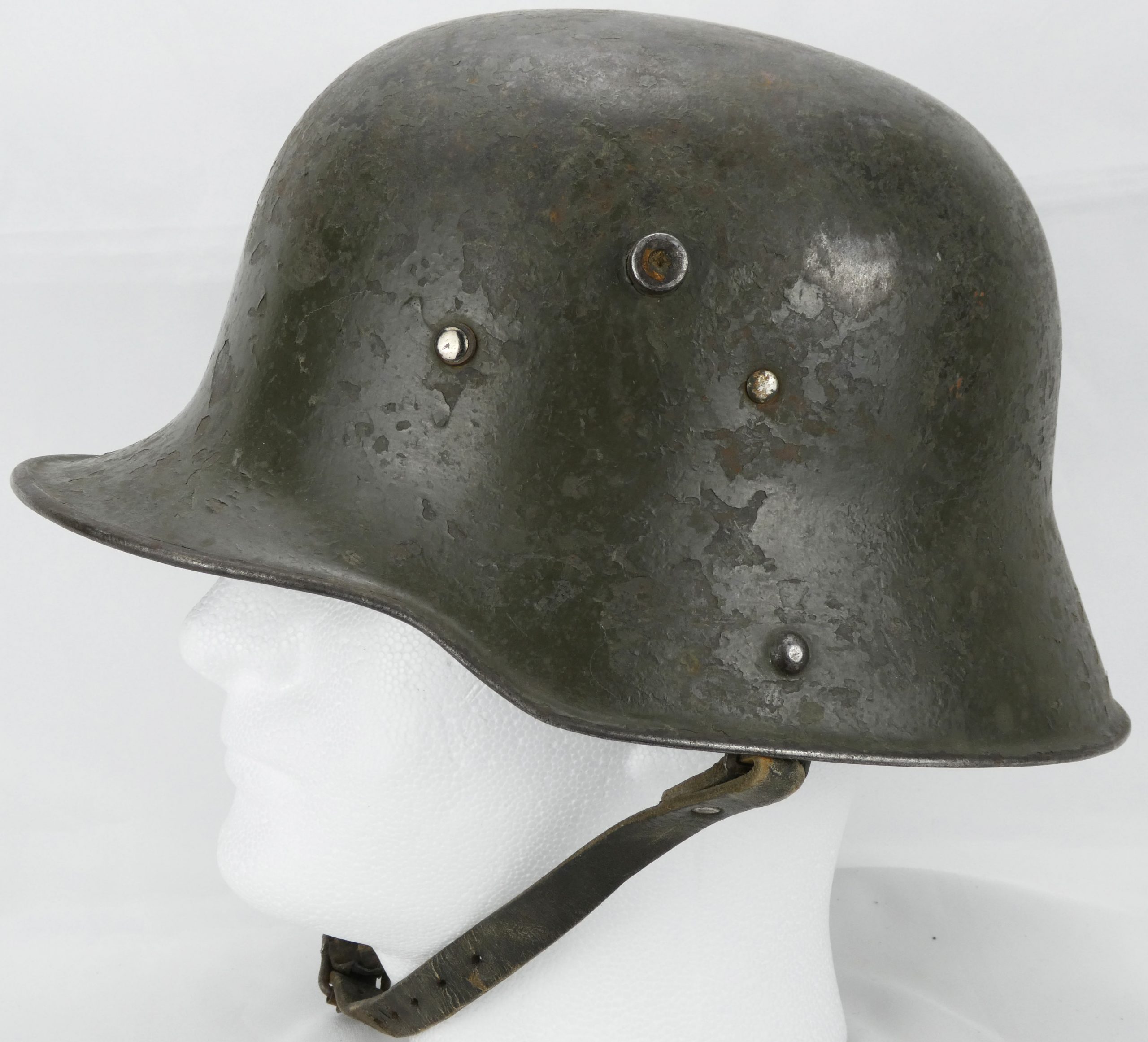
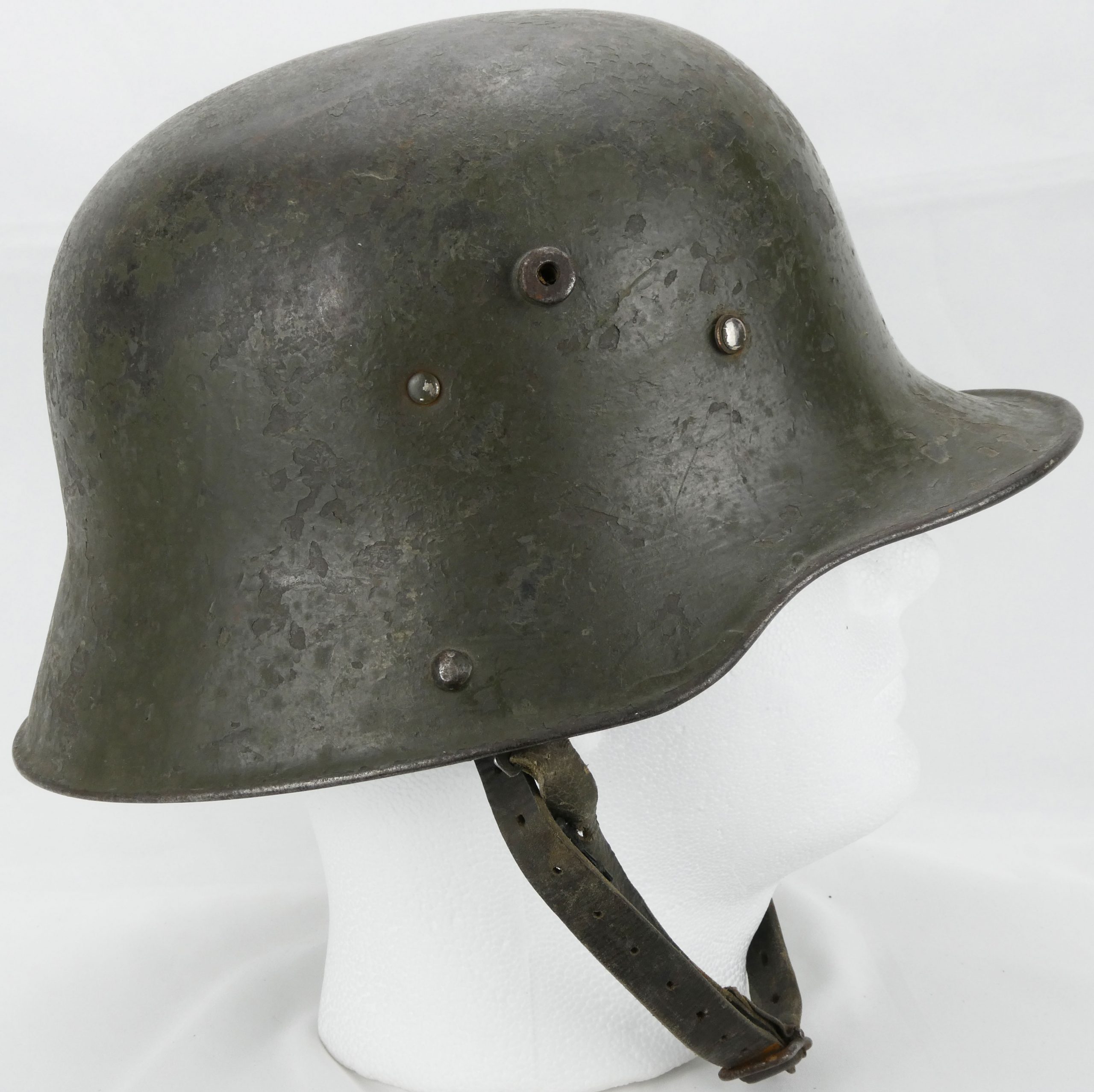
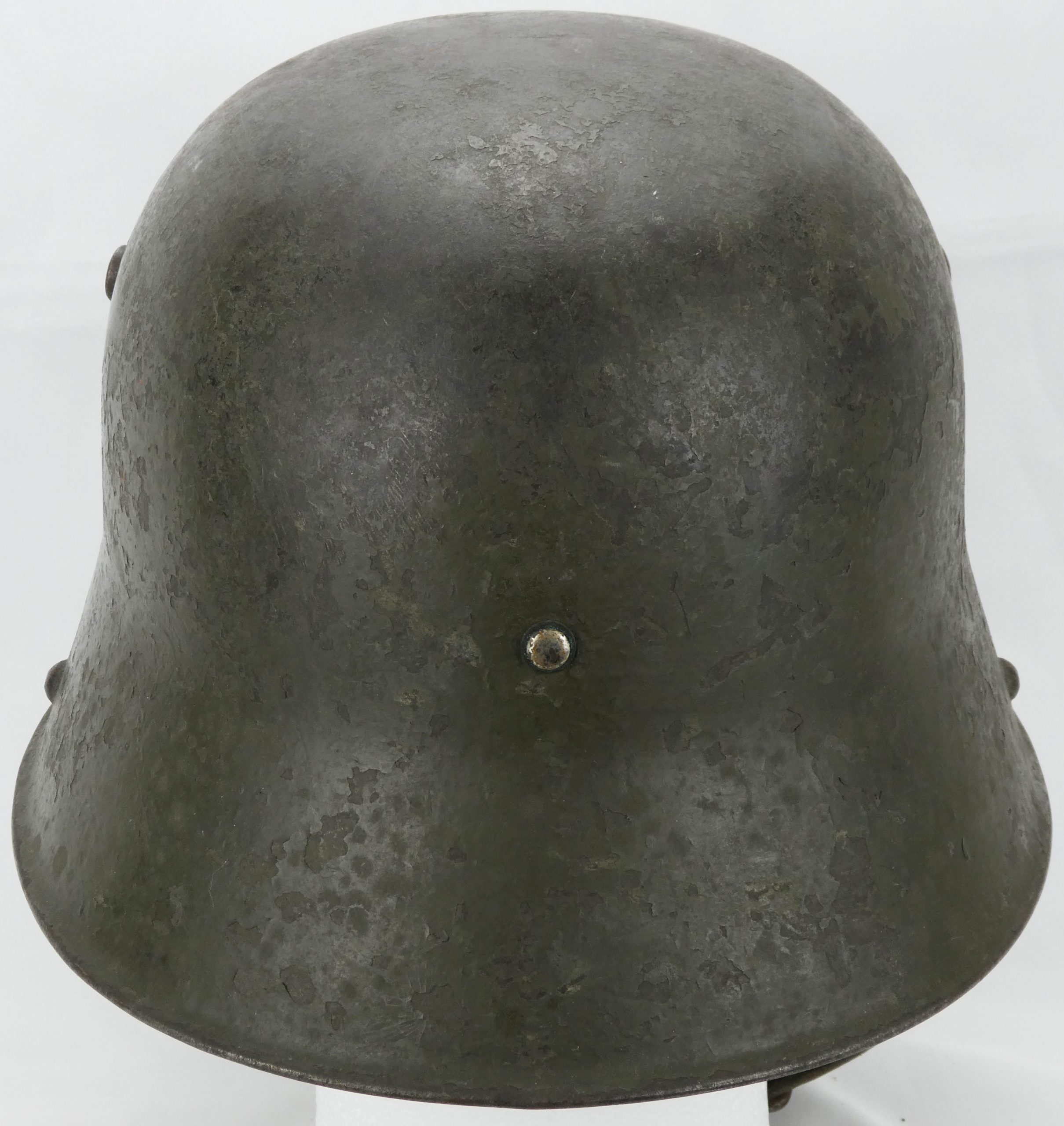
This is the version of the Stalhelm Imperial Germany issued during World War 1 to reduce the amount of head injuries from explosives in trench warfare [4]. The particular example shown here likely had an extra hole drilled into it some time after WW2 for an early version of the Finnish liner, itself a close copy of the original WW1 German liner, during the refurbishment process. This helmet was bought through Varusteleka in August 2020.
Inside:
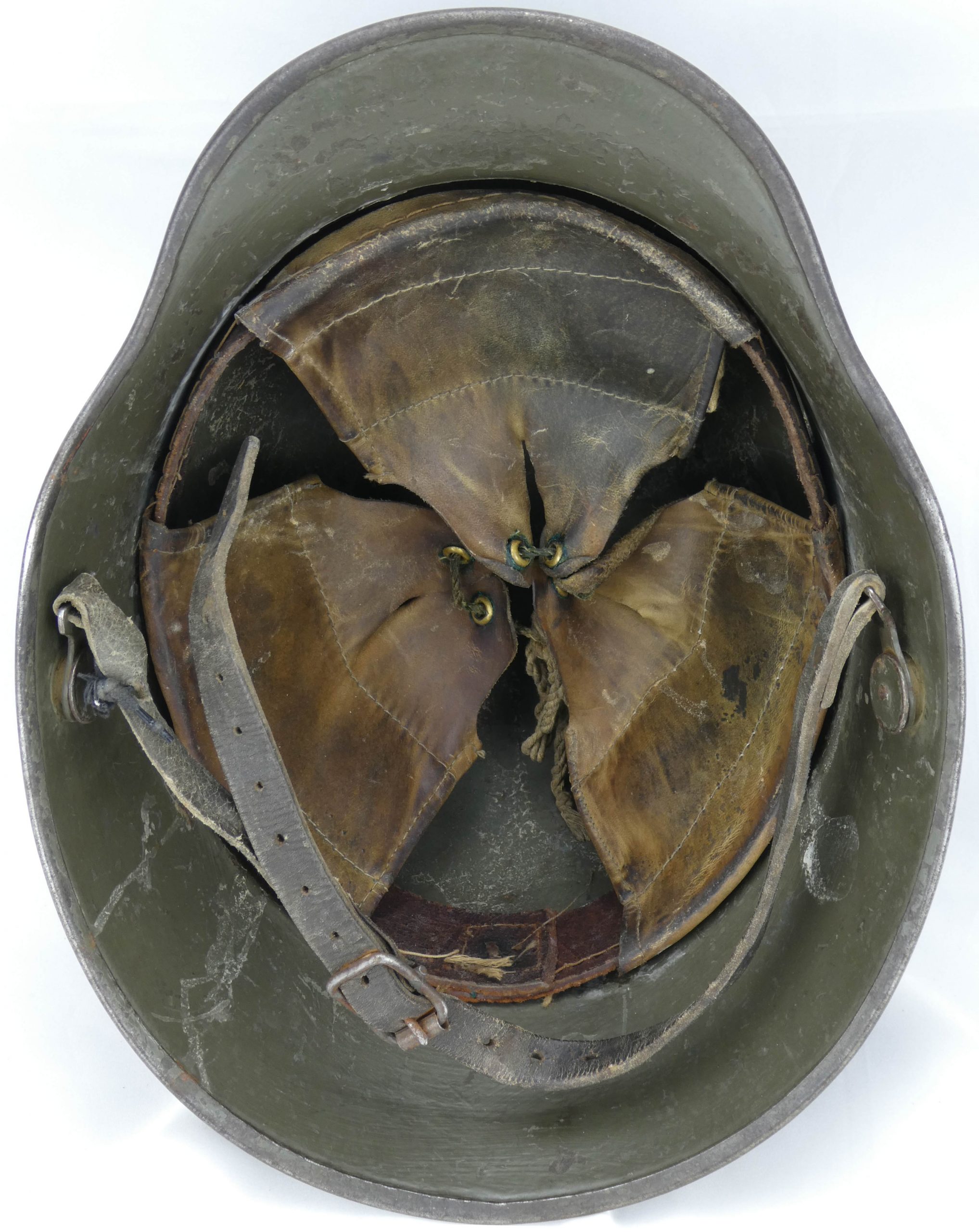
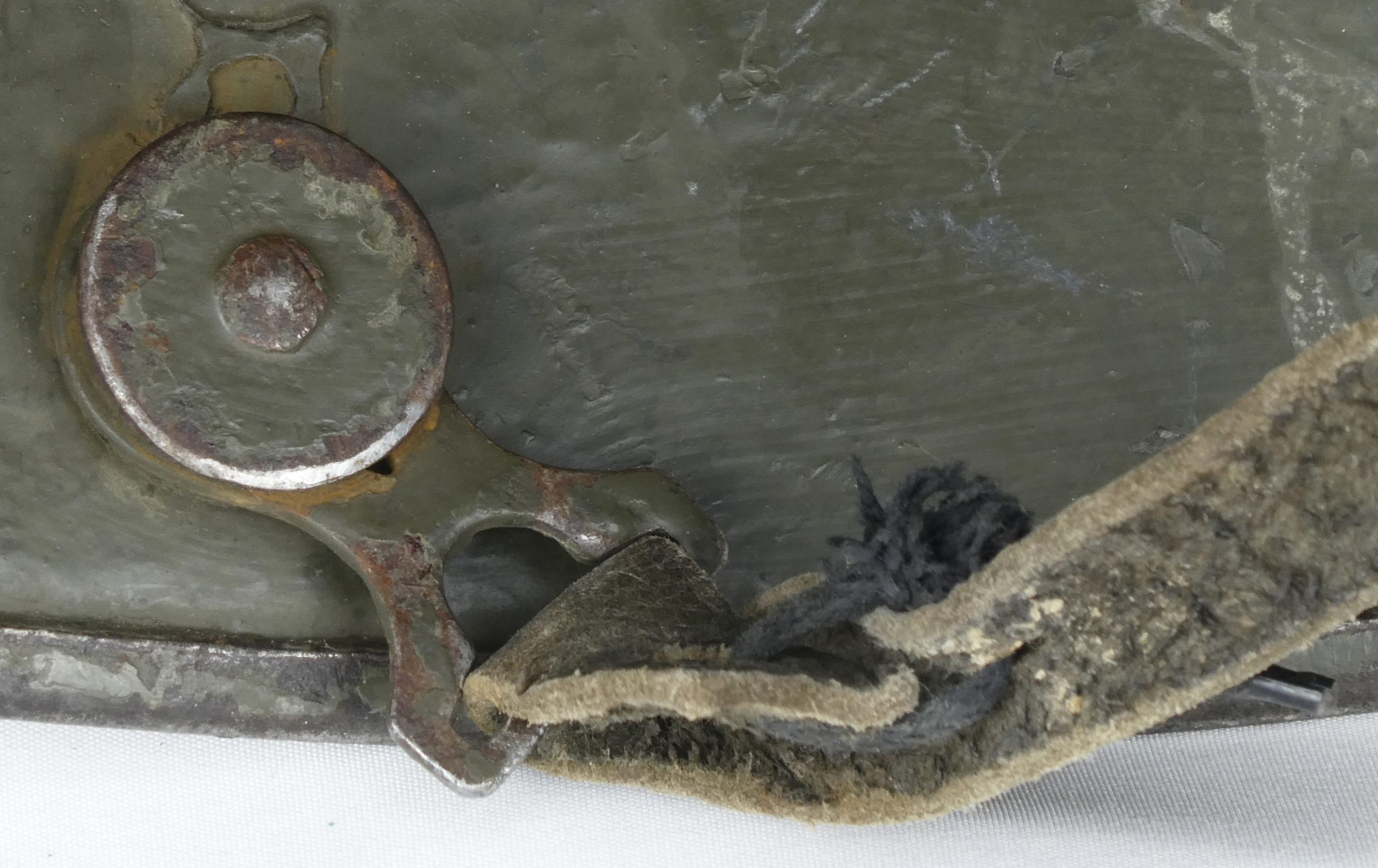
Three-panel liner like German WW1 liner. This is the earliest version of post-WW2 Finnish Stalhelm liner [5]. The original helmet swivel, intended for the German pickelhaube chinstrap [4], is still used.
Chinstrap Buckle:
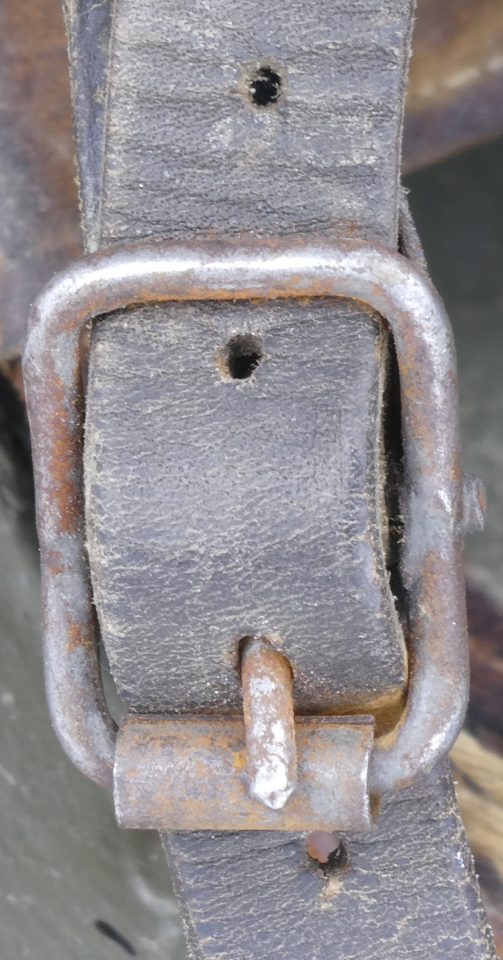
Top:
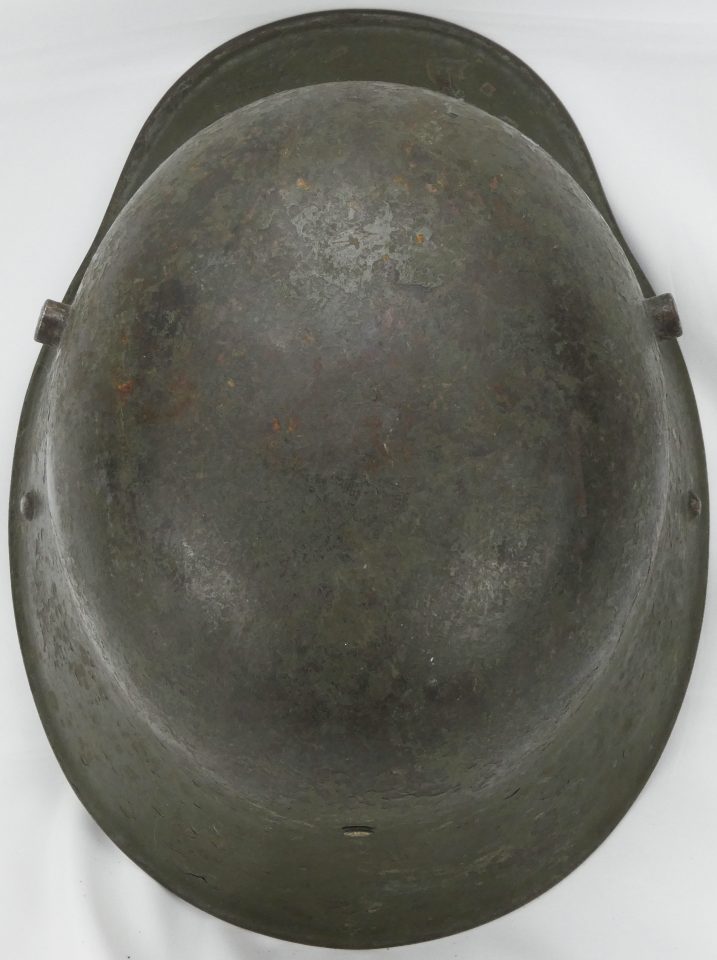
M1935:
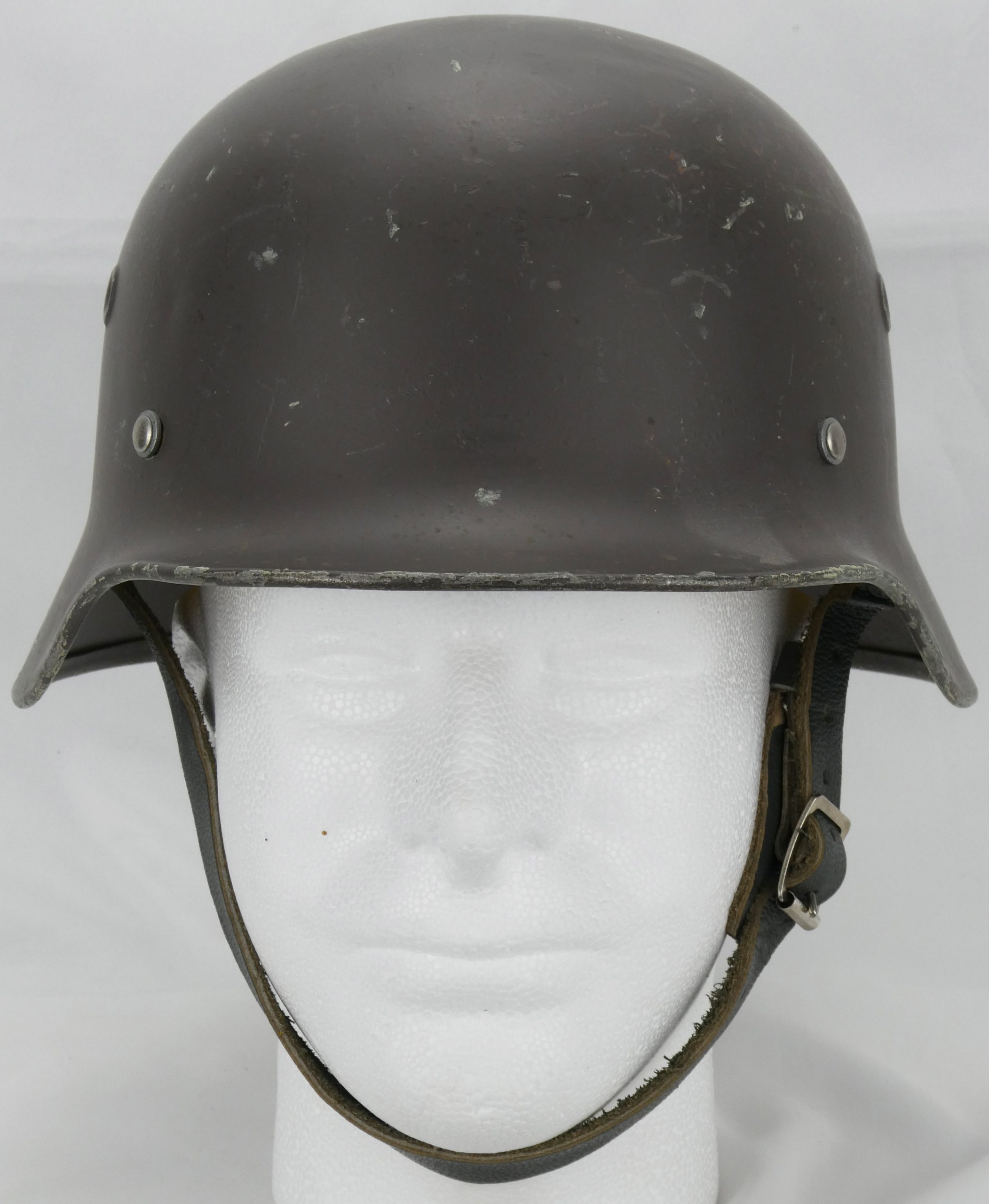
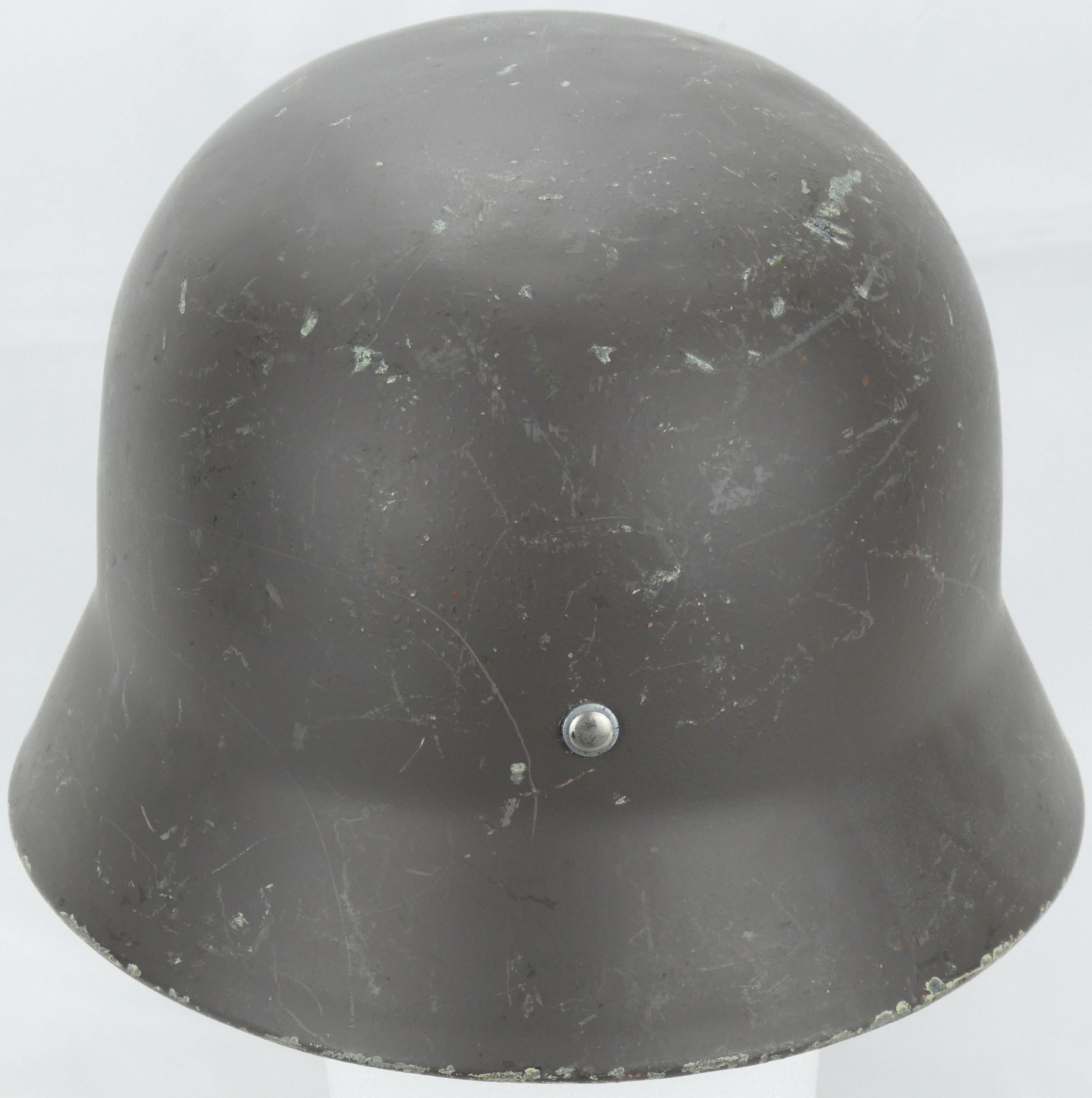
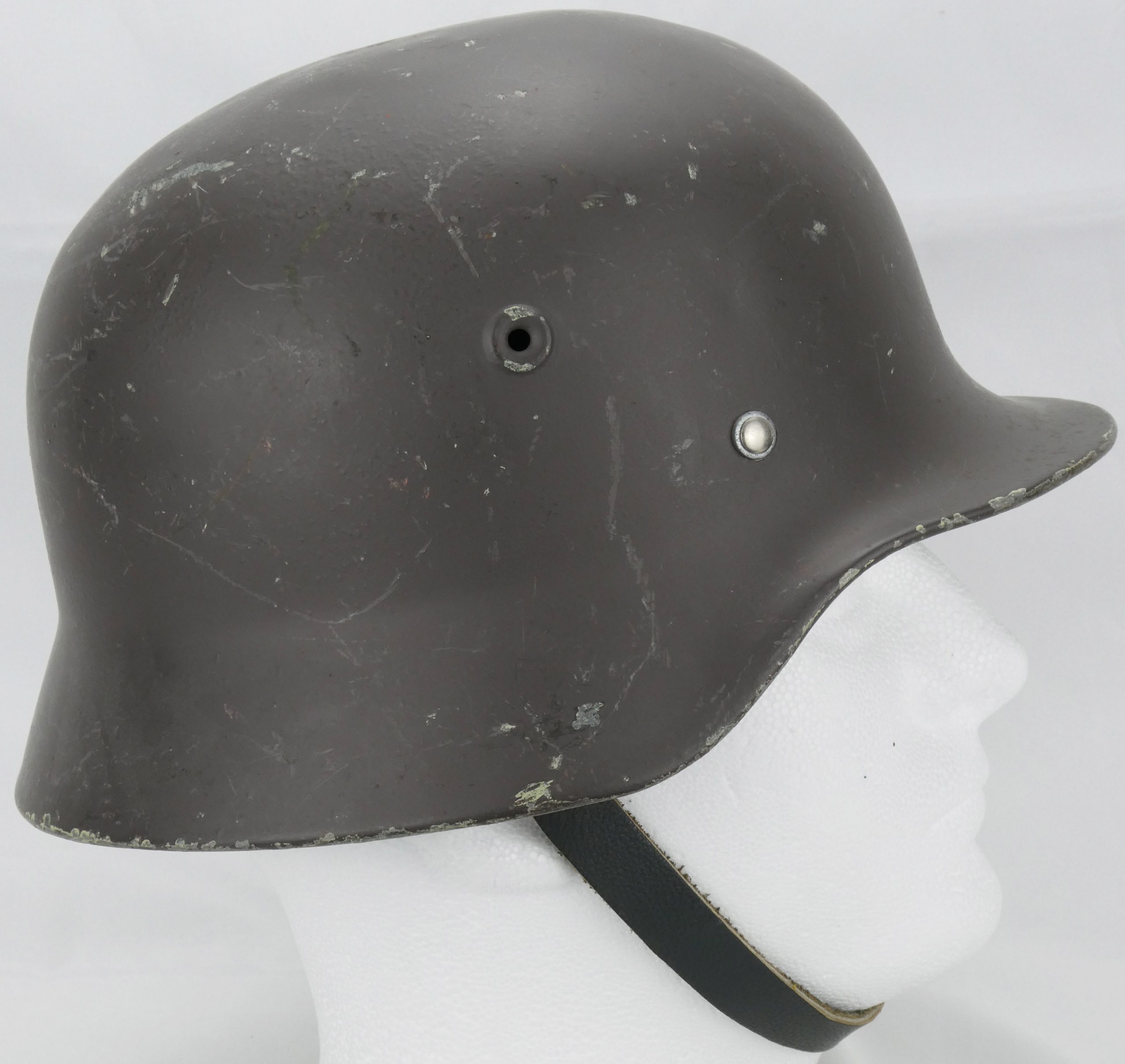
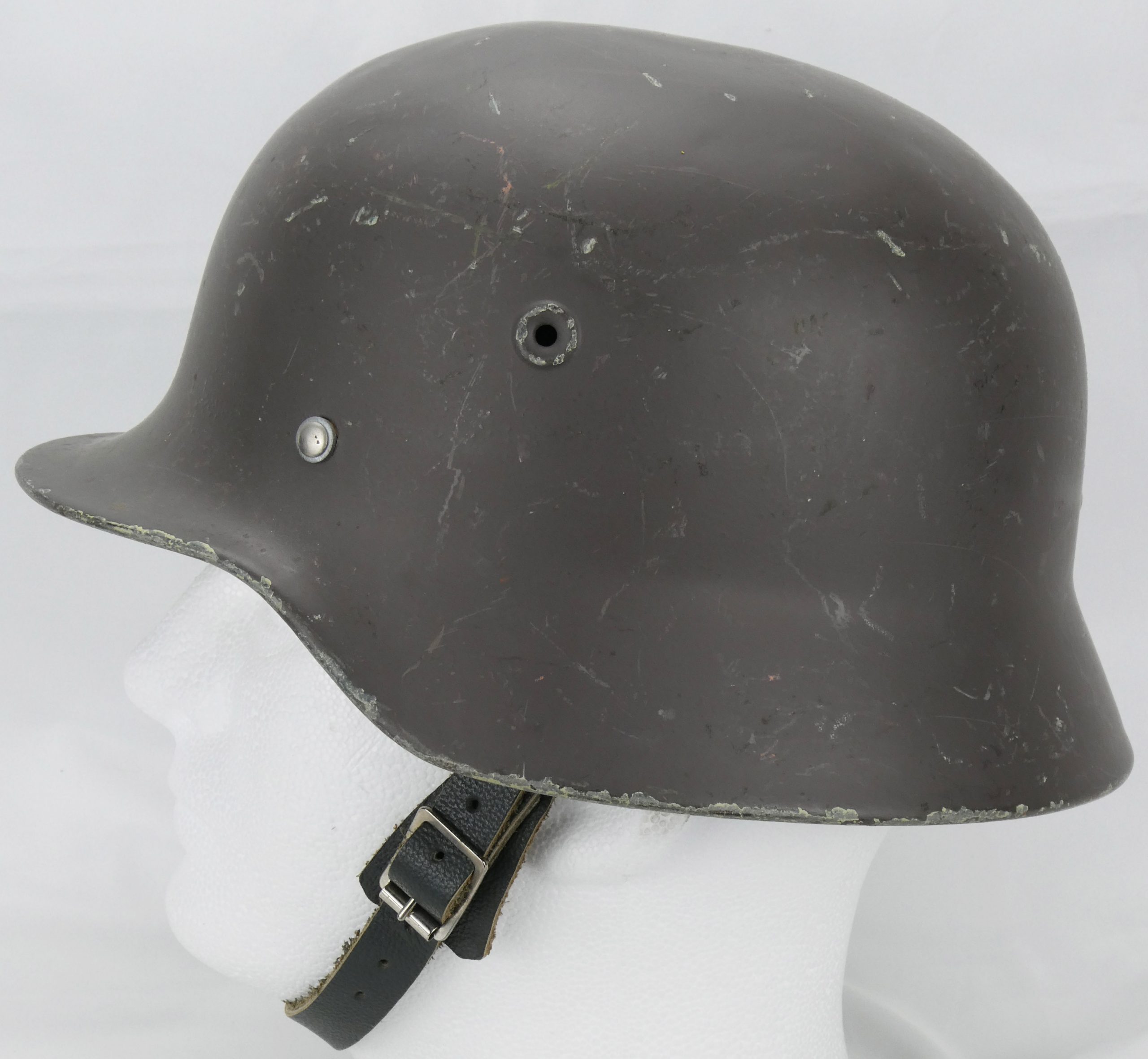
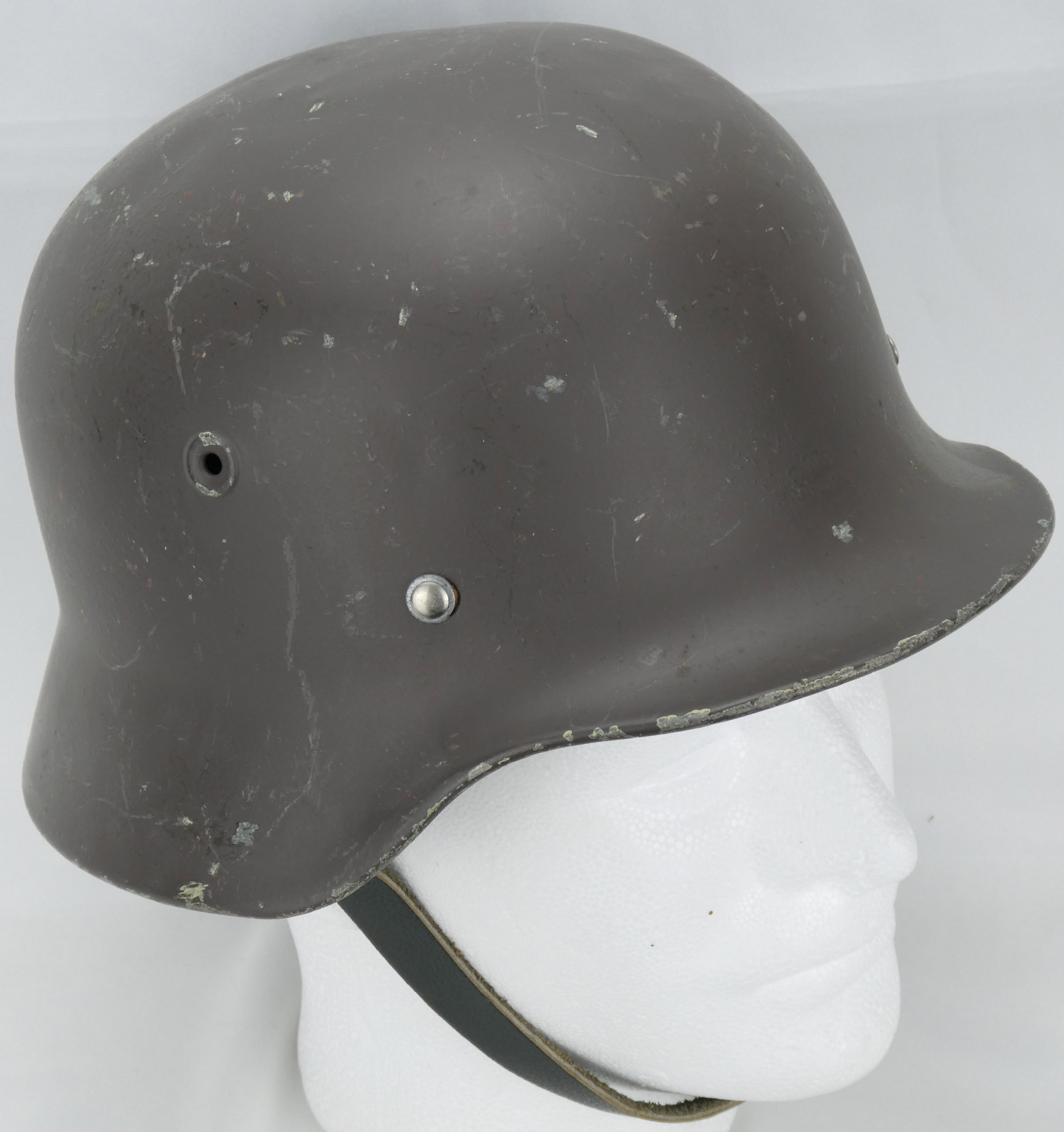
This helmet is the more simplified version of the M1935 stalhem made during WW2 with punched ventilation holes for faster production [6]. Collectors sometimes call these helmets “M40” or “M40/55” specifically for the Finnish ones. Finland acquired approximately 50,000 Stalhelms from West Germany during the 1950’s (hence the “55” designation0[7].
Top:
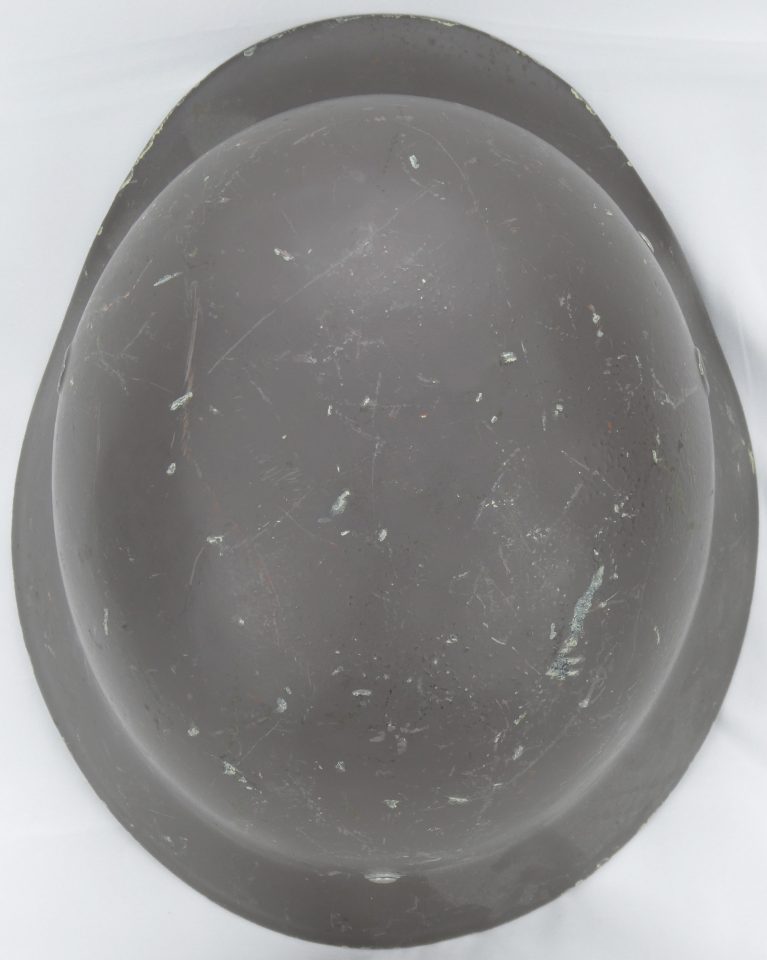
Inside:
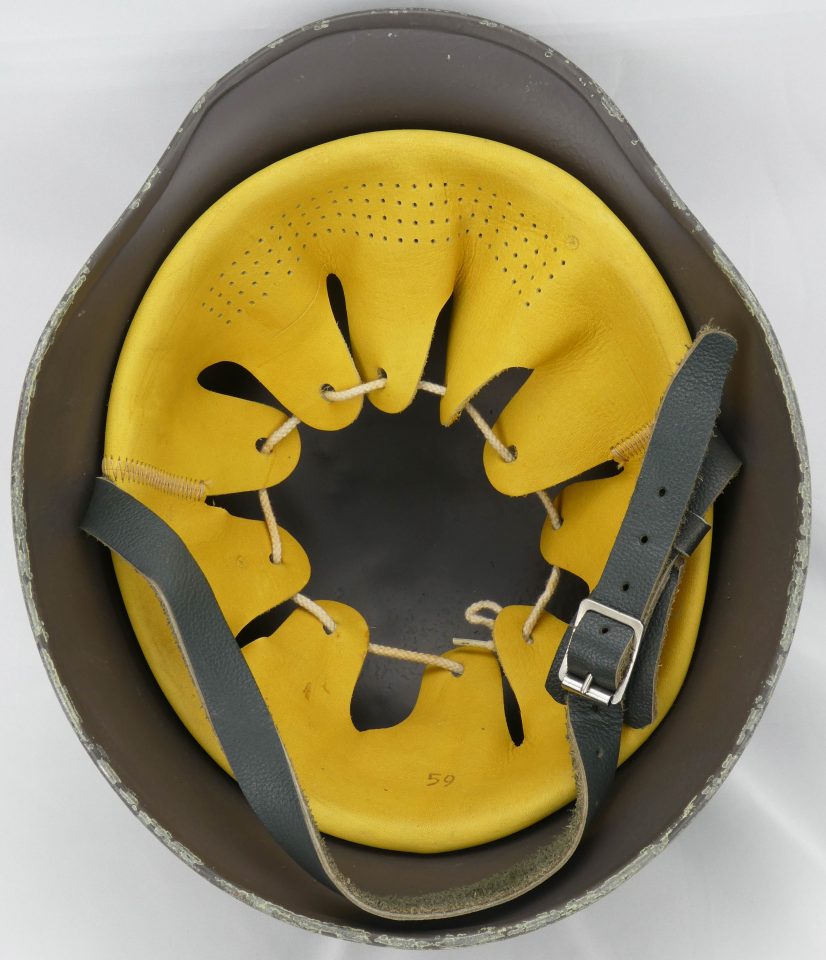
Helmet’s lip rolls inwards which is why it is an “M40” type. Liner was made after the war to refurbish the helmets in Finnish service.
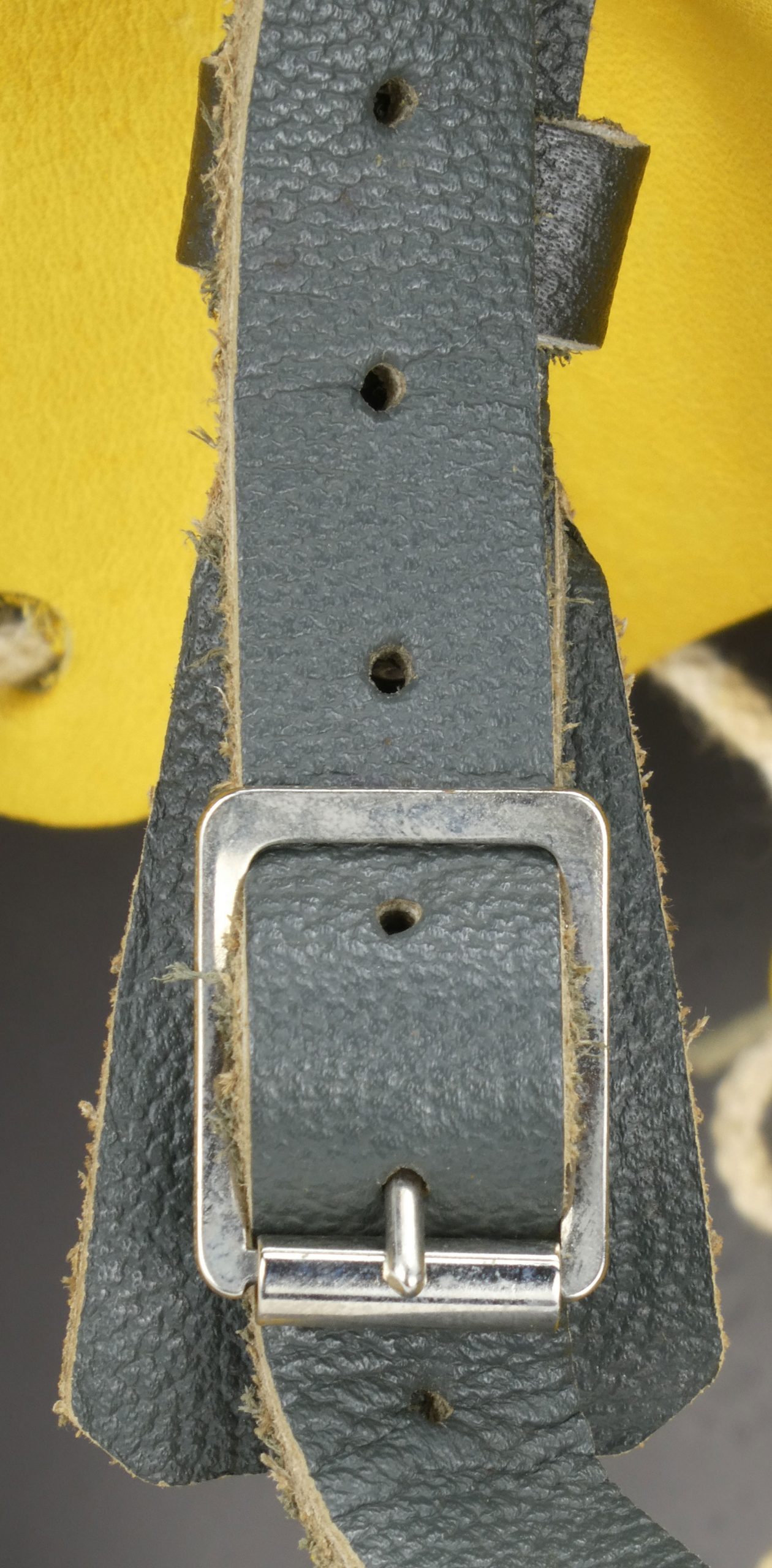
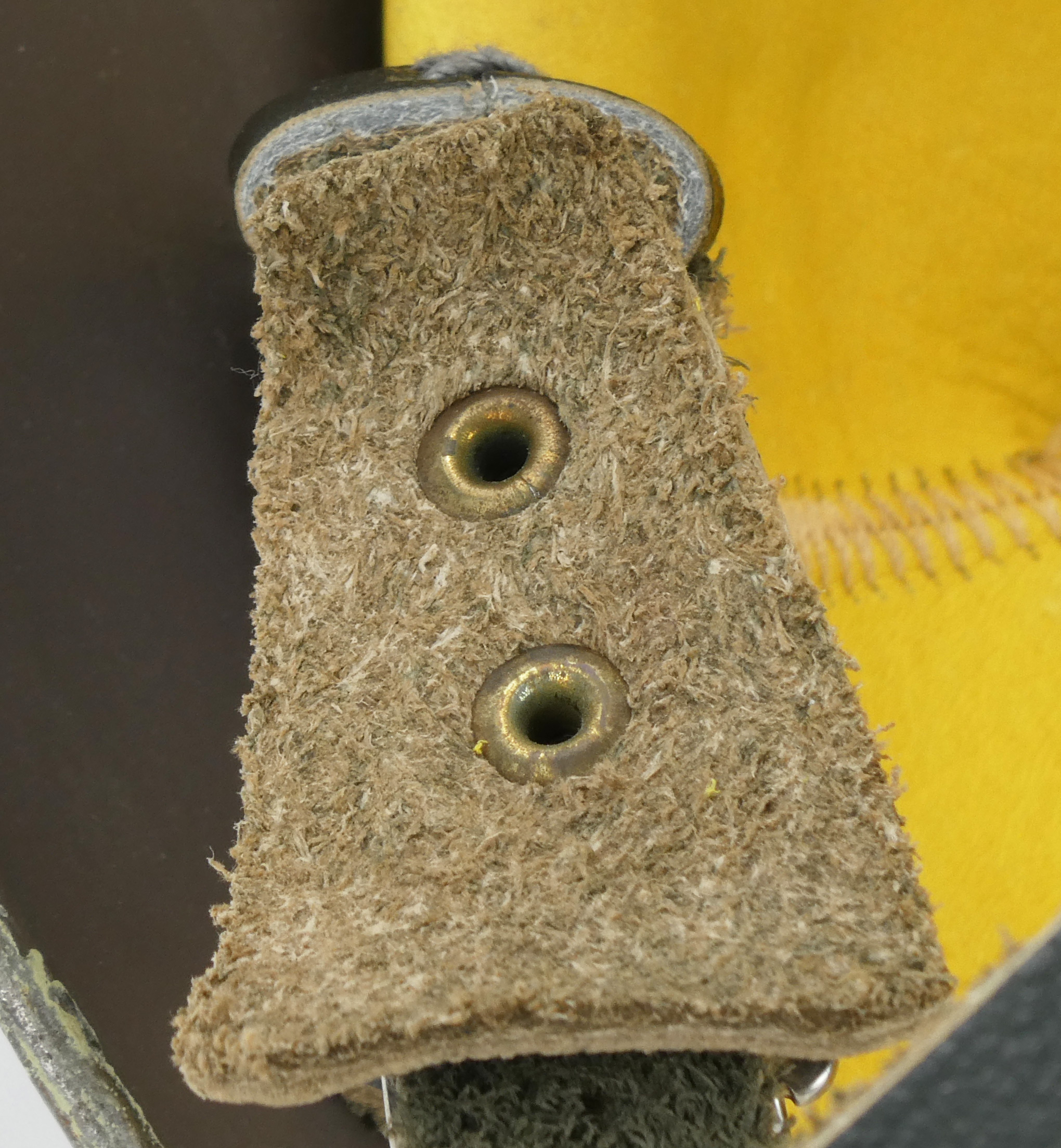
Chinstrap has a protective layer of leather on face side where buckle is.
